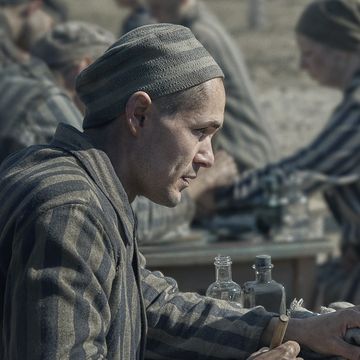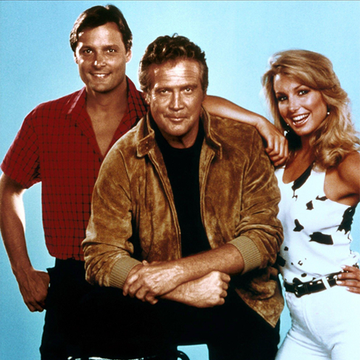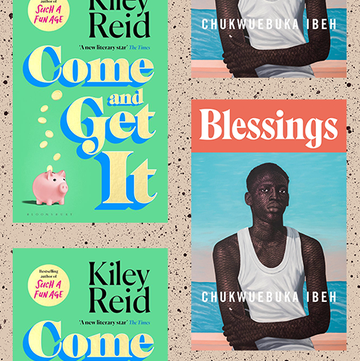I go into every year looking to be surprised. I think people who try to predict things and get ahead of [the trends] all the time run the risk of ruining the joy of experiencing music for the first time. Sometimes we’re so desperate to get ahead of things that we forget that it’s the moment that really matters. I remember I was at Coachella and Kendrick Lamar’s DAMN. dropped; I was driving back to the house where I was staying, and I put on DAMN. for the first time on a streaming service. I didn’t get an advance of it. I didn’t use any kind of Apple Music privilege. I just listened to it and drove around at night in Palm Springs, and it was fucking amazing. I will never forget that moment. If I try to get ahead of those moments, I won’t have moments I’ll never forget.
Streaming really arrived in 2017. We’ve been doing what we do at Beats 1 since 2015, but it’s all been coming together in 2017. People realise streaming is the infrastructure for the future in terms of how we connect with artists and music. That’s opened up for me, at least, what the era is going to become.
It’s been an unbelievably successful year for rap and hip-hop in general, as it’s been established as the most popular genre of music worldwide; For anyone who loves that music, this has long been the case—but for it to become statistically correct was another big statement. But look at how it’s evolved: the genre has really adapted to the way people listen to music very quickly. Drake, for example, is like the Michael Jackson of the streaming age; just as Michael Jackson truly knew how to use the music video as a medium, Drake absolutely understands the pace and the culture of streaming.
A lot of young rappers have moved from SoundCloud—artists like 21 Savage, Playboi Carti, and Lil Uzi Vert—and now have real streaming numbers behind them. Cardi B had an incredible year and reached No. 1 on the Billboard chart, which was one of the most exciting moments for women in hip-hip in a very long time. The charts have changed, which played a role in her success. When Migos’ “Bad and Boujee” came out last year, it already had a quarter of a billion streams before it made it into Top 40 rotation. People are consuming and enjoying music at a rate that radio and other traditional forms of media can’t keep up with.
"Bodak Yellow” is one of those songs that comes along that has an alchemy that can’t be defined. It’s the sum of all its parts. It's about where she came from and the story of how she became an artist: “This is who I’ve always wanted to be. This is who I am.” The beat is incredible, the perfect line of hard and open. And it’s an incredible performance. To me, it sums up everything that’s great about a modern smash.
There’s no anthem like a New York anthem. And that’s what “Bodak Yellow” was to me: A New York anthem.
Meanwhile, Jay-Z came out with one of the most mature and deeply thoughtful albums of his career. 4:44 was a huge step for rap music and hip-hop, an honest reflection of who he is as a human being right now. Jay-Z can work with any producer he wants, and he can write a banger and crush. But Jay-Z decided that wasn’t where his head was; he was honest to his process, and he made an album that could’ve been made by Marvin Gaye or Neil Young (and was made by his wife): an honest and open record that doesn’t need to follow a trend. It made a strong statement for rap music: If you're an artist in your 40s, don’t be afraid to say what’s in your heart and in your mind, and don’t dress it up in a way that sounds like it’s chasing the current trends.
Then there’s someone like Lil Peep, who literally fused the concept of rock and roll with rap music. People always talk about how rock is alive and well in rap music, but Peep was like, “Nah, I just like the sound of guitars.” I was slow on Lil Peep; I was playing catch up on Lil Peep. Once I realised what he had to offer, I started putting everything into Lil Peep. Once I love something, I go for it.
Every generation faces challenges. What’s going on right now is so in front of these young kids’ faces, and it’s very hard for that information not to reach them. When you’re constantly surrounded by information, whether it’s positive or challenging, it changes the pattern with which you live your life. And it can bring things like anxiety and depression.
In 2017, there has been an open dialogue about mental illness and anxiety and depression. We’re losing people. We’re losing people who on the surface seem great—and it turned out they weren’t. The more we have that conversation, the less alone we all feel. Lil Peep had no problem coming out and talking openly about anxiety and depression among his peers, which only continues to move the dialogue forward. I think Lil Peep’s success was in line with the times.
Music has always reflected the time in which it is released, and it’s changed in the first year of Donald Trump’s presidency, too. It’s dangerous to place that expectation on artists' shoulders because they make music because they have to, and what’s going on inside and what needs to be said can take many different shapes or forms. Sometimes it’s looking out the window, sometimes it’s looking down the street, and sometimes it’s looking inside yourself.
I don’t think there should be an expectation from artists to reflect their time, but I do think that it is happening. We’re still in the first stage of a changing world, and art is going to reflect that over time. There’s an overarching philosophy: “What are you saying?” Even if you’re talking about your own experiences, how are you making it inclusive to the listener or to your fans so they don’t feel alone? There’s a desire for community and a desire for understanding, and we’re seeing that grow and grow.
For younger artists, streaming is all they know—they don’t see any other option. Streaming is the cornerstone. You have to get in there and work out how to use it. Obviously radio is still important, but in terms of distribution, streaming is it.
This sense of independence that young people and young artists took back from the music industry at the turn of the millennium has become a business model. It’s no longer a reaction to overpriced CDs or technology giving them access to music; it’s now becoming a model out of which to build careers. These artists are leading their conversations, they are reaching audiences directly, and they are working out what they want to say. And that is an incredibly positive thing—it just creates more of the good stuff. Out of the challenges we’ve tried to work our way through, we’re starting to see a new industry, and the business model is finally beginning to adapt.














